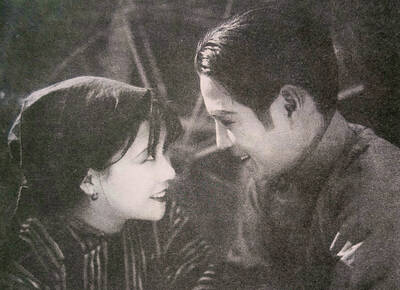Fans and critics may disagree over when exactly the Fast & Furious franchise jumped the shark, but there is only one correct answer: When the Pontiac Fiero went into space.
Weightless and violating every physical law, the floating car — tasked with bumping a satellite in the ninth installment — was the very symbol of how bloated and crazed the once-plucky series had become. There really was no way down after that.
And yet we have come to 10, part of a planned series of films finally saying goodbye. Fast X is, thankfully, shackled to Earth’s gravity — sometimes tenuously, it must be said — but it has become almost camp, as if it breathed in too much of its own fumes.

Photo: AP
Fast X reaches into the fifth movie — 2011’s Fast Five — for the seeds to tell a new story. In a memorable moment five movies ago, Vin Diesel’s Dom Toretto wrecked a bad guy and his team on a bridge in Rio de Janeiro. Little did we know then, but that bad guy had a son who survived and now, years later, vows vengeance. That’s it. That’s the plot.
That said, Fast X is monstrously silly and stupidly entertaining — just Wile E Coyote stuff, ridiculous stunts employing insane G-forces and everything seemingly on fire. There are elements of Mission: Impossible, 007 and John Wick, as if all the action franchises were somehow merging. But here’s a warning: It careens to an end without a payoff, a more dangerous stunt than any in the movies themselves.
The film would not be near enough as fun without Jason Momoa, who plays the bad guy’s son as a full-on flamboyant psycho, licking a knife clean after killing someone with it and painting the toenails of a dead victim as he displays the corpse in a demented garden party.

Photo: AP
“Never accept death when suffering is owed,” he says.
He is half Joaquin Phoenix from The Joker and half Jack Sparrow from Pirates of the Caribbean. Momoa has a penchant for planning explosions and then standing on a high spot and throwing his arms wide like Christ the Redeemer as the blast wave hits. The film sags as soon as he’s not in it.
Momoa is part of the franchise’s familiar tactic of stacking ever more stars with not enough to do — this time we also welcome Brie Larson, Alan Ritchson, Daniela Melchior and Rita Moreno. There’s even a Pete Davidson cameo.
That’s on top of regulars Michelle Rodriguez, Tyrese Gibson, Chris “Ludacris” Bridges, Jordana Brewster, John Cena, Jason Statham, Charlize Theron, Sung Kang, Scott Eastwood and Helen Mirren, whose attempt once again at a working-class accent is comical. This is a clown car of talent. The poster for the film includes 14 characters, like an Avengers movie.
At the center is the always-sleeveless Diesel, who keeps getting exposed as a truly terrible actor, one who evidently only attended the Brooding 101 seminar in drama school. The filmmakers usually just prop him up in front of a wall of family photos and he stares at them intently. “I only care about protecting the people that I love,” he will growl.
Family — as fans of the franchise know well — is always central, or rather, a gothic zero-sum notion of blood’s bond explained with soap opera dialogue. Toretto must protect family no matter the cost (but apparently OK with leaving his 8-year-old son in someone else’s care as he drag races in Rio).
“You know what your problem is?” teases Momoa. “Family. You can’t save them all.”
New director Louis Leterrier — from a screenplay by veteran Justin Lin and newcomers Zach Dean and Dan Mazeau — take us from Los Angeles to Antarctica, threatening much of Rome with a 20 kiloton bomb along the way and ending the movie at the side of a dam in Portugal in a cliffhanger. Stick around for the credits and even more mega-stars are promised for the next installment.
What you get this time are two brutal hand-to-hand fights, a car smashing two helicopters and rush hour traffic, car bombs, remote-controlled cars (big and small), vehicles that leap into the sky like salmon and a plane that drops a souped-up racer from its belly onto the highway.
Taking material from Fast Five means the delicate task of returning to Paul Walker, the franchise veteran who died in 2013. Old footage of Walker does appear in Fast X as the movie recreates events on that Rio bridge. It is handled respectfully and coolly. In a nice touch, Walker’s daughter, Meadow, has a cameo as a flight attendant.
With a foot in the past, one in the future and one on the gas, Fast X is pure popcorn lunacy. Was that too many feet? Oh, excuse us, you wanted logic?

On a hillside overlooking Taichung are the remains of a village that never was. Half-formed houses abandoned by investors are slowly succumbing to the elements. Empty, save for the occasional explorer. Taiwan is full of these places. Factories, malls, hospitals, amusement parks, breweries, housing — all facing an unplanned but inevitable obsolescence. Urbex, short for urban exploration, is the practice of exploring and often photographing abandoned and derelict buildings. Many urban explorers choose not to disclose the locations of the sites, as a way of preserving the structures and preventing vandalism or looting. For artist and professor at NTNU and Taipei

March 10 to March 16 Although it failed to become popular, March of the Black Cats (烏貓進行曲) was the first Taiwanese record to have “pop song” printed on the label. Released in March 1929 under Eagle Records, a subsidiary of the Japanese-owned Columbia Records, the Hoklo (commonly known as Taiwanese) lyrics followed the traditional seven characters per verse of Taiwanese opera, but the instrumentation was Western, performed by Eagle’s in-house orchestra. The singer was entertainer Chiu-chan (秋蟾). In fact, a cover of a Xiamen folk song by Chiu-chan released around the same time, Plum Widow Missing Her Husband (雪梅思君), enjoyed more

Last week Elbridge Colby, US President Donald Trump’s nominee for under secretary of defense for policy, a key advisory position, said in his Senate confirmation hearing that Taiwan defense spending should be 10 percent of GDP “at least something in that ballpark, really focused on their defense.” He added: “So we need to properly incentivize them.” Much commentary focused on the 10 percent figure, and rightly so. Colby is not wrong in one respect — Taiwan does need to spend more. But the steady escalation in the proportion of GDP from 3 percent to 5 percent to 10 percent that advocates

From insomniacs to party-goers, doting couples, tired paramedics and Johannesburg’s golden youth, The Pantry, a petrol station doubling as a gourmet deli, has become unmissable on the nightlife scene of South Africa’s biggest city. Open 24 hours a day, the establishment which opened three years ago is a haven for revelers looking for a midnight snack to sober up after the bars and nightclubs close at 2am or 5am. “Believe me, we see it all here,” sighs a cashier. Before the curtains open on Johannesburg’s infamous party scene, the evening gets off to a gentle start. On a Friday at around 6pm,